Articles
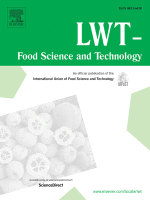
Research Article
Monitoring and prediction of chocolate blooming using Vis-NIR and FT-IR hyperspectral imaging and machine learning techniques: A study on tempering and storage effects
Hilmi Eriklioğlu, Rosario del P. Castillo, Mecit Halil Oztop
Chocolate blooming is one of the main issues in the chocolate industry. Fat blooming is the most common type of chocolate blooming. When blooming occurs, customer satisfaction significantly decreases because of the unpleasant look and undesired texture. The reason for blooming is generally lack of tempering or poor storage conditions. Since blooming occurs with time, it is not easy to detect, especially in the early stages. Therefore, it is necessary to develop tools to monitor chocolate blooming in initial stages and predict the blooming stage. Hyperspectral imaging is a non-destructive imaging technique that can reveal differences related to physical and chemical structure. In this research, commercial chocolate samples were collected and melted to produce untempered chocolate. All samples were remolded into coin size tablets and hyperspectral images were taken in 30 days’ time. Results showed that by using line scan, VIS-NIR hyperspectral camera (400–1000 nm), spectral signature differences were observable between tempered, untempered chocolate and different storage times. Prediction accuracy was assessed by the use of chemometric approaches such as k-Nearest Neighbor (KNN), Support Vector Machines (SVM) and Artificial Neural Networks (ANN). All three methods showed high performance, but Neural Networks predicted 99 % of the samples correctly with Savitzky-Golay (SG) second derivative preprocessing. In addition, Fourier-transform infrared (FT-IR) imaging confirmed compositional changes between bloomed and non-bloomed regions. Multivariate Curve Resolution–Alternating Least Squares (MCR-ALS) analysis of acquired images revealed distinct spectral contributions from bloomed and non-bloomed regions, highlighting compositional changes related to fat migration. The integration of hyperspectral imaging and chemometrics allowed early detection and monitoring of blooming stages, offering a potential solution for real-time chocolate quality control.
Keywords: Chocolate; Blooming; Hyperspectral imaging; FT-IR microscopy; Chemometrics; Machine learning; Fat bloom; Quality control

Research Article
Properties of water-pectin mixtures by means of NMR relaxometry – influence of temperature, concentration and precipitation method
Maciej Osuch, Aylin Ozgur, Baris Ozel, Elzbieta Masiewicz, Esmanur Ilhan, Hatice Gul Solmaz, Mecit H. Oztop, Adam Kasparek, Danuta Kruk
Pectin is widely used in the food industry as a thickener, stabilizer, emulsifier, filler and gelling agent. The macroscopic properties of pectin and pectin including food products are largely determined by the molecular motion and interactions of pectin with water molecules. 1H spin-lattice relaxation studies were carried out on water-pectin mixtures over a frequency range from 10 kHz to 10 MHz. The pectin powders used in this study were obtained from beet using different precipitation methods. Applying NMR relaxometry, the mechanisms of translational diffusion of water molecules have been revealed. The translational diffusion coefficient was found to be five orders of magnitude lower compared to that of bulk water, while the residence time of the water molecules bound to the pectin was determined to be of the order of microseconds. The dynamics is (almost) independent of temperature (in the range from 298K to 318K). The fraction of bound water molecules depends on the precipitation method. NMR relaxometry uniquely reveals how industrial precipitation methods tune pectin’s hydration dynamics, offering strategies to design functional biopolymers for food applications. The corresponding relaxation contribution follows a power-law frequency dependence, but the power-law factor (varying between 0.15 and 0.19) is lower than factors predicted for polymer motion.
Keywords: Pectin; Hydration; Diffusion; Nuclear magnetic resonance; Precipitation
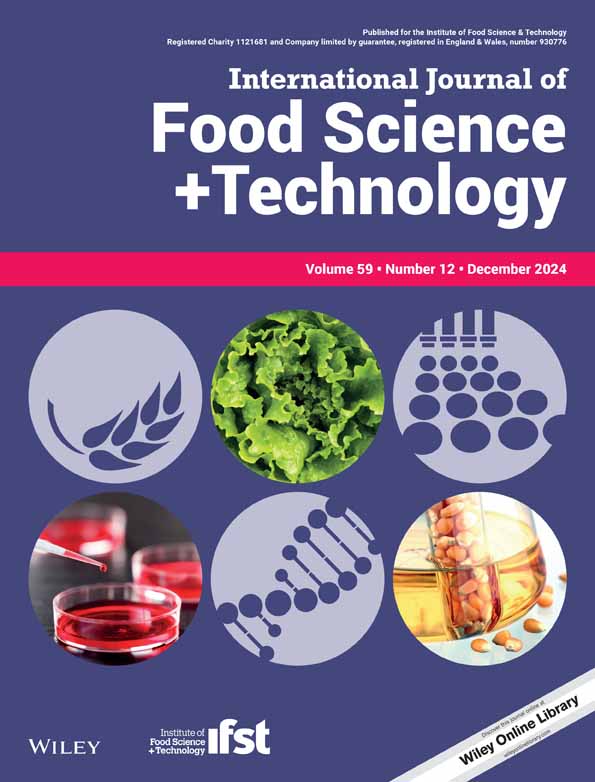
Research Article
Improvement of functional properties of Chlorella-inulin conjugates via Maillard reaction
Rabaila Riaz, Ozan Tas, Mecit Halil Oztop, Muhammad Bilal Khan Niazi, Hussnain Ahmed Janjua
Functionalities of proteins for the formulation of protein-fortified products are crucial, impacting the use of protein from sustainable sources such as algae. Glycation (the initial step of the Maillard browning reaction) is a standout modification technique explored to improve the functions of the protein in the food matrices. In this study, Chlorella powder was conjugated with inulin using a wet glycation method. It is a quick, scalable and easy method for improving the functionality of food proteins. In this study, conjugation was performed for three different Chlorella to inulin molar ratios (S1:1, S3:1 and S5:1). The solution of each molar ratio was heated at 90°C for 30 min under alkaline state (9.0 pH). Characterisation was conducted employing OPA assay, browning intensity and FTIR spectroscopy techniques. The results suggested glycation achieved the highest for the Chlorella-inulin ratio of 1:1. Glycation extent influenced the solubility of this conjugate significantly (P < 0.05) under an acidic medium. Other functional properties including hydration, moisture uptake, oil-binding and emulsifying activity were also significantly (P < 0.05) enhanced compared to unmodified Chlorella powder. Chlorella conjugate with molar ratio 1:1 also displayed higher antioxidant properties suggesting glycation’s role in improving Chlorella powder free radical scavenging capabilities (1.25-fold increase) and reducing power (2.24-fold increase). The total scavenging activity and total reducing power of S1:1 were 2.526 × 10−3 and 1.872 × 10−3 mg mL−1 mg−1(Trolox Eq.), respectively. The results provide an understanding of different functionalities for glycated conjugates promising utilisation in the food and beverage industry.
Keywords:Chlorella-inulin conjugates; Chlorella glycoconjugates; emulsifying activity; glycation; inulin; Maillard reaction; TD-NMR relaxometry
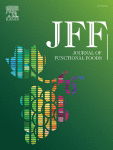
Research Article
Spirulina and chlorella derived hard candies as functional food
Shafia Maryam, Mecit Halil Oztop, Sarper Doğdu, Mehmet Ali Marangoz, Zeshan Zeshan, M. Qasim Hayat, Ramish Riaz, Muhammad Waqas Alam Chattha, Hussnain Ahmed Janjua
Hard candies with spirulina (Arthrospira platensis) and chlorella (Chlorella vulgaris) biomass were prepared. Their characterization include pH, moisture, hardness, color, total soluble solids, antioxidant, phenols, and flavonoid content. Safety tests were conducted on rats to examine protective effects of these candies against arsenate poisoning. Algal hard candies were slightly acidic, had low moisture content, and achieved optimal hardness. These candies contain 0.4 GAE mg/g phenols and 0.5 CAE mg/g flavonoids. Upon in-vivo analysis, algae candies increased acetyl cholinesterase, malondialdehyde, catalase, superoxide dismutase, and glutathione concentration in blood serum. Histopathology analysis revealed significant restoration in the liver, kidneys, and brain of Wistar rats treated with algal candies following arsenate poisoning. The phenolic and flavonoid content along with activation of antioxidative enzymes reveals radical scavenging activity of hard candies. Spirulina and chlorella candies may boost immune system, improving gut health, and enhancing antioxidant defense mechanisms and can be used as functional food.
Keywords: Algae; Formulation; Arsenate toxicity; Antioxidant; Hard candy
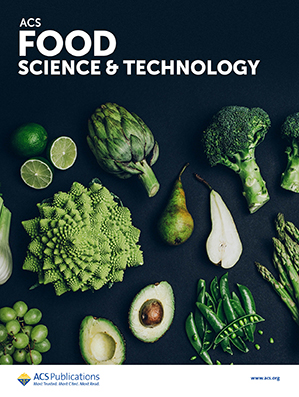
Research Article
Exploring Noncentrifugal Sugar as a Partial Replacement for White Sugar in Low Methoxyl Pectin Confectionery Gels: Impacts on Physical and Rheological Properties
Hafiz Imran Fakhar, Elif Cavdaroglu, Muhammad Qasim Hayat, Hussnain A. Janjua and Mecit Halil Oztop
Noncentrifugal sugar (NCS) is an unrefined, dark brown sugar containing minerals and plant secondary metabolites, unlike refined white sugar (WS). This study explored using NCS in confectionary jellies as an alternative sugar. We used different concentrations of NCS and WS to prepare low methoxyl pectin (LMP) confectionery gels characterized by their physical and rheological properties along with time-domain nuclear magnetic resonance (TD-NMR) relaxometry. The strongest LMP gel, with a hardness of 0.94 N, was achieved by substituting 25% of WS with NCS at a low CaCl2 concentration (0.075 M). Gels with up to 50% WS replaced by NCS showed comparable hardness to standard LMP gels made solely with WS at a 0.15 M CaCl2 concentration, attributed to NCS’s unique constituents. The NCS–WS gel exhibited the shortest T2 values (139.8 ms) and self-diffusion coefficient values (4.99 × 10–10 m2/s), indicating a denser, more cross-linked structure that restricted water mobility. These findings suggest NCS’s complex role in affecting LMP gels’ chemical and physical properties, highlighting its potential as a partial WS replacement in LMP gelation-based products, with an additional source of minerals and antioxidants.
Keywords: noncentrifugal sugar; low-methoxyl pectin; gelation; NMR; texture

Research Article
Universal 1H Spin–Lattice NMR Relaxation Features of Sugar—A Step towards Quality Markers
Hafiz Imran Fakhar, Adam Kasparek, Karol Kolodziejski, Leonid Grunin, Mecit Halil Öztop, Muhammad Qasim Hayat, Hussnain A. Janjua and Danuta Kruk
1H fast field-cycling and time-domain nuclear magnetic resonance relaxometry studies have been performed for 15 samples of sugar of different kinds and origins (brown, white, cane, beet sugar). The extensive data set, including results for crystal sugar and sugar/water mixtures, has been thoroughly analyzed, with a focus on identifying relaxation contributions associated with the solid and liquid fractions of the systems and non-exponentiality of the relaxation processes. It has been observed that 1H spin–lattice relaxation rates for crystal sugar (solid) vary between 0.45 s−1 and 0.59 s−1, and the relaxation process shows only small deviations from exponentiality (a quantitative measure of the exponentiality has been provided). The 1H spin–lattice relaxation process for sugar/water mixtures has turned out to be bi-exponential, with the relaxation rates varying between about 13 s−1–17 s−1 (for the faster component) and about 2.1 s−1–3.5 s−1 (for the slower component), with the ratio between the amplitudes of the relaxation contributions ranging between 2.8 and 4.2. The narrow ranges in which the parameters vary make them a promising marker of the quality and authenticity of sugar.
Keywords: sugar; NMR Relaxometry; NMR Time; FFC NMR; TD NMR

Research Article
Correlation of low field nuclear magnetic resonance relaxation with composition and glass transition of hard candies
Baris Ozel, Berkay Berk, Sirvan Sultan Uguz, Leonid Grunin, Mecit Halil Oztop
Hard candies produced from sucrose and doctoring agents such as glucose syrup (GS) and high fructose corn syrup (FS) have been investigated in terms of their final composition, glass transition temperature (Tg), degree of crystallinity, total soluble solids (TSS) content and water activity (aw). Time domain (TD) 1H NMR longitudinal relaxation time (T1) and second moment (M2) measurements have been used to understand the glassy state and crystallization characteristics for different hard candy formulations. The investigated candies include sucrose as the main sugar component. Different levels of doctoring agents have been mixed with sucrose to obtain products with different characteristics. It has been shown that addition of any doctoring agent to sucrose formulations decreases the Tg of the system significantly (p ≤≤ 0.05). Furthermore, GS or FS addition also induce significant changes in TSS and aw. T1 and M2 results are almost parallel to each other, both reaching the highest values for the highest sucrose concentration (p ≤≤ 0.05). The results demonstrate that the glass transition and crystallization characteristics of hard candy formulations can be monitored and analyzed by TD NMR relaxometry, alternative to other frequently used conventional methods including differential scanning calorimetry (DSC) and X-ray diffraction.
Keywords: 1H NMR; hard candy; glass transition; crystallization; sucrose

Research Article
Investigating the crystallinity of hard candies prepared and stored at different temperatures with low field-NMR relaxometry
Sena Kuzu, Baris Ozel, Sirvan Sultan Uguz, Sarper Dogdu, Mehmet Ali Marangoz, Leonid Grunin, Mecit Halil Oztop
Background: In this study, hard candies were produced by using sucrose, glucose syrup and water. They were cooked at different temperatures, changing from 135 to 145 °C with an interval of 2.5 °C. They were stored at different storage temperatures, which were 25, 4, −18 and −80 °C. Hard candies placed at room temperature were stored for 2 months. In order to understand the crystallization characteristics of the hard candies, time domain (TD) proton nuclear magnetic resonance (1H-NMR) parameters of longitudinal relaxation time (T1) and second moment (M2) measurements were conducted. Moisture contents of the hard candies were determined by Karl–Fischer titration. X-ray diffraction experiments were also conducted as the complementary analysis.
Results: Increasing cooking temperature increased the crystallinity and decreased the moisture content of the hard candies significantly (P ≤0.05). Furthermore, storage temperature and storage time had significant effects on the crystallinity of the hard candies (P ≤0.05). The results of T1 and M2 correlated with each other (r > 0.8, P ≤ 0.5) and both produced the highest value at the cooking temperature of 145 °C and storage temperature of 4 °C (P ≤ 0.05). The values of T1 and M2 were obtained as 245.9 ms and 13.0 × 10−8 Hz2, respectively, for the cooking temperature of 145 °C and storage temperature of 4 °C.
Conclusion: This study demonstrated that the crystallinity of hard candies can be observed and examined by TD-NMR relaxometry, as an alternative to commonly used methods.
Keywords: hard candy; crystallinity; moisture content; 1H-NMR; second moment; T1

Review Article
Hard Candy Production and Quality Parameters: A review
Barış Özel, Sena Kuzu, Mehmet Ali Marangoz, Sarper Dogdu, Robert H. Morris, Mecit H. Oztop
Hard candies are sugar confections comprising mainly water and sucrose. Corn syrup, colorants and flavors are also usually added to hard candy formulations. The production of hard candy requires heating of the ingredients to very high temperatures to reduce moisture content and subsequent cooling to obtain a solid matrix. Cooling of the mixtures achieves the final, well known glassy state of the products. In this glassy state, the system is kinetically stable and molecular mobility is restricted, providing longer shelf life to hard candies. There are, however, several factors affecting the final quality and consumer acceptance of hard candies. Production methods and parameters, initial formulations as well as storage conditions all play a crucial role in the physicochemical, textural and sensory properties of hard candies. Addition of colorants and flavors also plays a vital role in the final quality. Although hard candy production is a simple process with few production stages, even small changes in the method of production and process parameters may induce substantial changes in the final product characteristics. Additionally, storage conditions such as temperature and humidity can change the product properties leading to graining and stickiness which are the two major problems for hard candies during storage. Both production and storage conditions should therefore be carefully chosen and controlled for desirable hard candy properties. This review addresses the general production methods and considers process parameters and quality parameters of hard candy products. Moreover, a comprehensive review of the related hard candy literature is also presented. The majority of hard candy reviews focus on specific methods and processes, but this review will present a more general frame on the subject.
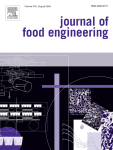
Research Article
Unravelling temperature-dependent molecular changes in hydrated wheat and maize starches using 1H time-domain NMR
Jana van Rooyen, Leonid Grunin, Mecit Oztop, Danuta Kruk, Marena Manley
This study proved that time-domain NMR (TD-NMR) experiments can accurately demonstrate the interaction between starch (wheat and maize) and water and the distribution of water molecules in starch-water systems during heating. Molecular properties in starch-water systems at 50% moisture content were monitored by Rhim and Kessemeier – Radiofrequency Optimized Solid-Echo (RK-ROSE) and Carr-Purcell-Meiboom-Gill (CPMG) pulse sequences at frequent (2 °C intervals) measurements during heating (55–80 °C). Starch-like and water-like phases were obtained by RK-ROSE and CPMG pulse sequences, respectively. The second moment, M2, along with the relaxation times of the populations, associated with fast-decaying protons, provided information on the crystal structure state during heating and the extent of gelatinisation. The relaxation times of the most abundant population from the CPMG signal decreased during heating due to strong interactions between starch and water. Temperature of stabilisation of this population aligned with the associated findings from the differential scanning calorimetry and rheological measurements.
Keywords: Starch gelatinisation; Molecular mobility; Proton relaxation; Dry thermal treatment
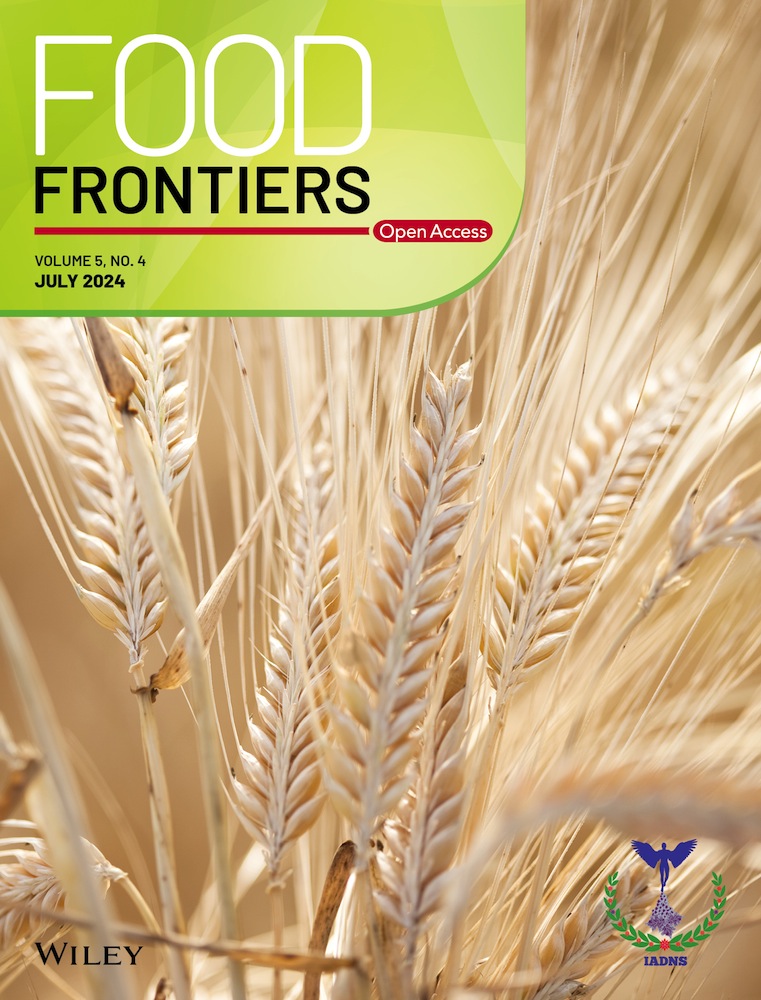
Research Article
Determining sugar and molasses origin by non-exchangeable hydrogen stable isotope of ethanol and carbon isotope ratio mass spectrometry
Macarena Rojas-Rioseco, Hafiz Imran Fakhar, Ivan Smajlovic, Margarita Smajlovic, Stevan Grkavac, Mecit Halil Oztop, Muhammad Qasim Hayat, Rosario del P. Castillo
This study explores the differentiation of sugar and molasses produced from sugar beet and cane, which are susceptible to fraudulent labeling due to differing production costs. The research aimed to authenticate these products by botanical origin using novel analytical techniques. Utilizing ethanol isotopic measurement–isotope ratio mass spectrometry (IRMS) for non-exchangeable hydrogen stable isotopes alongside carbon stable isotopes analysis through elemental analyzer–IRMS, the study accurately identified the origin of various sugar and molasses samples, pinpointed mislabeled goods, and determined the source of products with previously unknown provenance. These methods were also effective in revealing sugar and molasses adulteration and quantifying the extent of such fraud. The combined isotope analyses demonstrated their potential as robust tools for combating misrepresentation and adulteration in the sugar industry.
Keywords: botanical origin; carbon isotopes; hydrogen isotopes; isotopic content; molasses

Research Article
Application of segmented analysis via multivariate curve resolution with alternating least squares to 1H-nuclear magnetic resonance spectroscopy to identify different sugar sources
Cristian A. Fuentes, Mecit Halil Oztop, Macarena Rojas-Rioseco, Martín Bravo, Aylin Ozgür Goksu, Marena Manley, Rosario del P. Castillo
The different types of sugar employed in the food industry exhibit chemical similarity and are mostly dominated by sucrose. Owing to the sugar origin of and differences in production, the presence of certain minor organic compounds differs. To differentiate between sugars based on their botanical source, geographical origin, or storage conditions, commercial brown sugars and sugar beet extracts were analyzed by 1H NMR spectroscopy applying a segmented analysis by means of multivariate curve resolution-alternating least squares (MCR–ALS). Principal component analysis and partial least squares-discriminant analysis yielded excellent differentiation between sugars from different sources after the application of this preprocessing strategy; without loss of chemical information and with direct interpretation of the results. By applying a segmented analysis via MCR–ALS to 1H NMR sugar data, similar spectroscopic profiles could be differentiated. This improved the selectivity of 1H NMR spectroscopy for sugar source differentiation which can be useful for industrial sugar authentication purposes.
Keywords: sugar beet; brown sugar; multivariate analysis; 1H NMR spectroscopy; preprocessing

Research Article
Classification and Quantification of Sucrose from Sugar Beet and Sugarcane using Optical Spectroscopy and Chemometrics
Hilmi Eriklioglu, Esmanur Ilhan, Mikhail Khodasevich, Darya Korolko, Marena Manley, Rosario Castillo, Mecit Halil Oztop
Sucrose, obtained from either sugar beet or sugarcane, is one of the main ingredients used in the food industry. Due to the same molecular structure, chemical methods cannot distinguish sucrose from both sources. More practical and affordable methods would be valuable. Sucrose samples (cane and beet) were collected from nine countries, 25% (w/w) aqueous solutions were prepared and their absorbances recorded from 200 to 1380 nm. Spectral differences were observable in the ultraviolet-visible (UV-Vis) region from 200 to 600 nm due to impurities in sugar. Linear discriminant analysis (LDA), classification and regression trees, and soft independent modeling of class analogy were tested for the UV-Vis region. All methods showed high performance accuracies. LDA, after selection of five wavelengths, gave 100% correct classification with a simple interpretation. In addition, binary mixtures of the sugar samples were prepared for quantitative analysis by means of partial least squares regression and multiple linear regression (MLR). MLR with first derivative Savitzky-Golay were most acceptable with root mean square error of cross-validation, prediction, and the ratio of (standard error of) prediction to (standard) deviation values of 3.92%, 3.28%, and 9.46, respectively. Using UV-Vis spectra and chemometrics, the results show promise to distinguish between the two different sources of sucrose. An affordable and quick analysis method to differentiate between sugars, produced from either sugar beet or sugarcane, is suggested. This method does not involve complex chemical analysis or high-level experts and can be used in research or by industry to detect the source of the sugar which is important for some countries’ agricultural policies.
Keywords: UV-Vis spectroscopy; multivariate data analysis; sucrose; sugar beet; sugarcane

Research Article
Molecular Dynamics of Jelly Candies by Means of Nuclear Magnetic Resonance Relaxometry
Danuta Kruk, Leonid Grunin, Aleksandra Stankiewicz, Karol Kolodzieski, Esmanur Ilhan, Mecit Halil Oztop
1H spin-lattice Nuclear Magnetic Resonance relaxation studies have been performed for different kinds of Haribo jelly and Vidal jelly in a very broad frequency range from about 10 kHz to 10 MHz to obtain insight into the dynamic and structural properties of jelly candies on the molecular level. This extensive data set has been thoroughly analyzed revealing three dynamic processes, referred to as slow, intermediate and fast dynamics occurring on the timescale of 10−6 s, 10−7 s and 10−8 s, respectively. The parameters have been compared for different kinds of jelly for the purpose of revealing their characteristic dynamic and structural properties as well as to enquire into how increasing temperature affects these properties. It has been shown that dynamic processes in different kinds of Haribo jelly are similar (this can be treated as a sign of their quality and authenticity) and that the fraction of confined water molecules is reduced with increasing temperature. Two groups of Vidal jelly have been identified. For the first one, the parameters (dipolar relaxation constants and correlation times) match those for Haribo jelly. For the second group including cherry jelly, considerable differences in the parameters characterizing their dynamic properties have been revealed.
Keywords: nuclear magnetic resonance; relaxation; dynamics; jelly candies
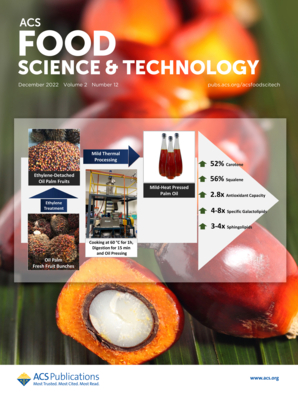
Research Article
Effect of Different Syrup Types on Turkish Delights (Lokum): A TD-NMR Relaxometry Study
Pelin Pocan, Leonid Grunin, Mecit Halil Oztop
Turkish delights were formulated by using sucrose (control) and different types of corn syrups (having varying glucose/fructose ratios) and allulose syrup. 30% allulose syrup and 30% sucrose-containing Turkish delights were found to exhibit an amorphous structure. Time-domain NMR relaxometry experiments were also conducted on delights by measuring T2 relaxation times, and two distinct proton populations were observed in all formulations. The use of different syrup types at different substitution levels led to significant changes in the relaxation times (T2a and T2b) of the samples, indicating that the relaxation spectrum might be used as a fingerprint for Turkish delights containing different types and amounts of syrup types. Second moment (M2) values which were measured from the signal acquired using a magic sandwich echo pulse sequence were also found to be an effective and promising indicator to detect the crystallinity of Turkish delights.
Keywords: Time-Domain (TD) NMR Relaxometry; Magic Sandwich Echo (MSE); Soft Candies; Food Gels; Allulose Syrup

Research Article
Non-Conventional Time Domain (TD)-NMR Approaches for Food Quality: Case of Gelatin-Based Candies as a Model Food
Sirvan Sultan Uguz, Baris Ozel, Leonid Grunin, Emin Burcin Ozvural, Mecit Halil Oztop
The TD-NMR technique mostly involves the use of T1 (spin-lattice) and T2 (spin-spin) relaxation times to explain the changes occurring in food systems. However, these relaxation times are affected by many factors and might not always be the best indicators to work with in food-related TD-NMR studies. In this study, the non-conventional TD-NMR approaches of Solid Echo (SE)/Magic Sandwich Echo (MSE) and Spin Diffusion in food systems were used for the first time. Soft confectionary gelatin gels were formulated and conventional (T1) and non-conventional (SE, MSE and Spin Diffusion) TD-NMR experiments were performed. Corn syrups with different glucose/fructose compositions were used to prepare the soft candies. Hardness, °Brix (°Bx), and water activity (aw) measurements were also conducted complementary to NMR experiments. Relaxation times changed (p < 0.05) with respect to syrup type with no obvious trend. SE/MSE experiments were performed to calculate the crystallinity of the samples. Samples prepared with fructose had the lowest crystallinity values (p < 0.05). Spin Diffusion experiments were performed by using Goldman–Shen pulse sequence and the interface thickness (d) was calculated. Interface thickness values showed a wide range of variation (p < 0.05). Results showed that non-conventional NMR approaches had high potential to be utilized in food systems for quality control purposes.
Keywords: soft candy; gelatin; confectionery; TD-NMR; crystallinity; longitudinal relaxation time; spin diffusion; Magic Sandwich Echo; Solid Echo; second moment

Research Article
Investigation of the Hydration Behavior of Different Sugars by Time Domain-NMR
Ozan Tas, Ulku Ertugrul, Leonid Grunin, Mecit Halil Oztop
The hydration behavior of sugars varies from each other and examining the underlying mechanism is challenging. In this study, the hydration behavior of glucose, fructose, allulose (aka rare sugar), and sucrose have been explored using different Time Domain Nuclear Magnetic Resonance (TD-NMR) approaches (relaxation times, self-diffusion, and Magic Sandwich Echo (MSE)). For that purpose, the effects of different sugar concentrations (2.5%, 5%, 10%, 15%, 20%, 30%, and 40%) (w/v) and hydration at different times for 1 day were investigated by T2 relaxation times and self-diffusion coefficients. Crystallinity values of the solid and hydrated sugars were also determined with MSE. Change in T2 relaxation times with concentration showed that the fastest binding with water (parallel with the shortest T2 values) was observed for sucrose for all concentrations followed by glucose, fructose, and allulose. Furthermore, dependency of T2 relaxation times with hydration time showed that sucrose was the fastest in binding with water followed by glucose, fructose, and allulose. The study showed that allulose, one of the most famous rare sugars that is known to be a natural low-calorie sugar alternative, had the lowest interaction with water than the other sugars. TD-NMR was suggested as a practical, quick, and accurate technique to determine the hydration behavior of sugars.
Keywords: TD-NMR; allulose; hydration; self-diffusion coefficient; magic sandwich echo

Review Article
Holistic View of Starch Chemistry, Structure and Functionality in Dry Heat-Treated Whole Wheat Kernels and Flour
Jana van Rooyen, Senay Simsek, Samson Adeoye Oyeyinka, Marena Manley
Heat treatment is used as a pre-processing step to beneficially change the starch properties of wheat flour to enhance its utilisation in the food industry. Heat-treated wheat flour may provide improved eating qualities in final wheat-based products since flour properties predominantly determine the texture and mouthfeel. Dry heat treatment of wheat kernels or milled wheat products involves heat transfer through means of air, a fluidising medium, or radiation—often resulting in moisture loss. Heat treatment leads to changes in the chemical, structural and functional properties of starch in wheat flour by inducing starch damage, altering its molecular order (which influences its crystallinity), pasting properties as well as its retrogradation and staling behaviour. Heat treatment also induces changes in gluten proteins, which may alter the rheological properties of wheat flour. Understanding the relationship between heat transfer, the thermal properties of wheat and the functionality of the resultant flour is of critical importance to obtain the desired extent of alteration of wheat starch properties and enhanced utilisation of the flour. This review paper introduces dry heat treatment methods followed by a critical review of the latest published research on heat-induced changes observed in wheat flour starch chemistry, structure and functionality.
Keywords: thermal treatment; wheat grains; starch damage; crystallinity; pasting properties; retrogradation

Research Article
Real-time benchtop NMR spectroscopy for the online monitoring of sucrose hydrolysis
Alper Soyler, Dylan Bouillaud, Jonathan Farjon, Patrick Giraudeau, Mecit H. Oztop
The online monitoring of chemical reactions by using benchtop Nuclear Magnetic Resonance (NMR) spectroscopy has become increasingly attractive for the past few years. The use of quantitative online NMR spectroscopy is a promising alternative to traditional analytical methods with its rapid, quantitative and non-invasive nature that makes it applicable to complex and diverse biochemical mixtures like food systems. In this study, sucrose hydrolysis by invertase was chosen as a model reaction for online monitoring. Rather than conventional NMR spectroscopy experiments that rely on the use of deuterated water, the benchtop setting allows working in protonated solvents, and tailored water suppression techniques were used to make quantification more accurate. For the hydrolysis reaction, a 10% sucrose solution was hydrolyzed. The kinetic constants determined by the fractional conversion model were comparable to the results obtained in other studies. Quantitative online NMR spectroscopy can be considered as a promising tool for monitoring food processes in a continuous mode.
Keywords: Benchtop NMR spectroscopy; Sucrose; Invertase Flow NMR; Online monitoring

